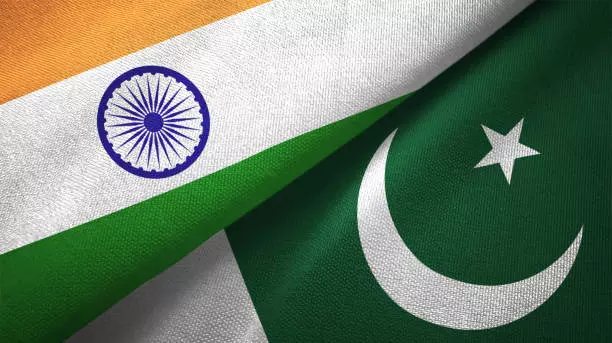
India has more nuclear warheads than Pakistan but trails China: Report
China is emerging rapidly with 600 warheads, showing a more aggressive pace than India’s steady expansion, said the report

India now possesses 180 nuclear warheads, surpassing Pakistan’s stable count of 170, the Stockholm International Peace Research Institute (SIPRI) reported. This increase of eight warheads from the previous year indicates India’s strategic advancements in its nuclear capabilities.
SIPRI pegged the number of nuclear warheads in the Indian arsenal at 180 as of January 2025, compared to 172 a year earlier, while Pakistan is estimated to have 170 nuclear weapons, the same as last year. China’s arsenal consisted of 600 nuclear warheads in January 2025, up from 500 last year.
Also read | Pak tried to incite communal clashes in India with Pahalgam attack: PM Modi
SIPRI, an independent institute founded in 1966, conducts research into conflict and disarmament. Their latest findings suggest that India's augmentation of its nuclear arsenal is part of a broader global trend toward increasing nuclear stockpiles, diverging from post-Cold War reductions.
The think-tank on Monday launched its annual assessment of the state of armaments, disarmament and international security in SIPRI Yearbook 2025.
Expanding nuclear arsenal
“Nearly all of the nine nuclear-armed states -- the United States, Russia, the United Kingdom, France, China, India, Pakistan, the Democratic People's Republic of Korea (North Korea) and Israel -- continued intensive nuclear modernisation programmes in 2024, upgrading existing weapons and adding newer versions,” said a report by the global think-tank.
India is believed to have once again “slightly expanded” its nuclear arsenal in 2024 and continued to develop new types of nuclear delivery systems, the SIPRI said in a statement.
“India's new ‘canisterised’ missiles, which can be transported with mated warheads, may be capable of carrying nuclear warheads during peacetime, and possibly even multiple warheads on each missile, once they become operational,” the think-tank claimed.
Pakistan also continued to develop new delivery systems and “accumulate fissile material” in 2024, suggesting that its nuclear arsenal might expand over the coming decade, it said.
US, Russia lead the race
Of the total global inventory of an estimated 12,241 warheads in January 2025, about 9,614 were in “military stockpiles for potential use”, it claimed.
The report highlights that the United States and Russia own 90 per cent of these 12,241 warheads. In contrast, China is emerging rapidly with 600 warheads, showing a more aggressive pace than India’s steady expansion.
The think-tank further said since the end of the Cold War, the gradual dismantlement of retired warheads by Russia and the USA has normally outstripped the deployment of new warheads, resulting in an overall year-on-year decrease in the global inventory of nuclear weapons.
“This trend is likely to be reversed in the coming years, as the pace of dismantlement is slowing, while the deployment of new nuclear weapons is accelerating,” it cautioned.
Operation Sindoor
The statement on the release of its yearbook also makes a reference to the recent military conflict between India and Pakistan.
The four-day military confrontation between the two nuclear-armed neighbours in May brought the two countries to the brink of full-scale war.
Also read | Pakistan planned 48-hour operation against India, but it folded up in 8 hrs: CDS
In early 2025 tensions between India and Pakistan briefly spilled over into armed conflict, it said. The combination of strikes and third-party disinformation “risked turning a conventional conflict into a nuclear crisis,” Matt Korda, Associate Senior Researcher with SIPRI, was quoted as saying in the statement. “This should act as a stark warning for states seeking to increase their reliance on nuclear weapons,” he said.
Both India and Pakistan remain outside formal nuclear arms control frameworks. However, SIPRI notes India's modernisation efforts are aligned with its “no first use” policy, ensuring a stable deterrence strategy. In comparison, Pakistan’s arsenal development has not seen numerical growth.
(With agency inputs)

